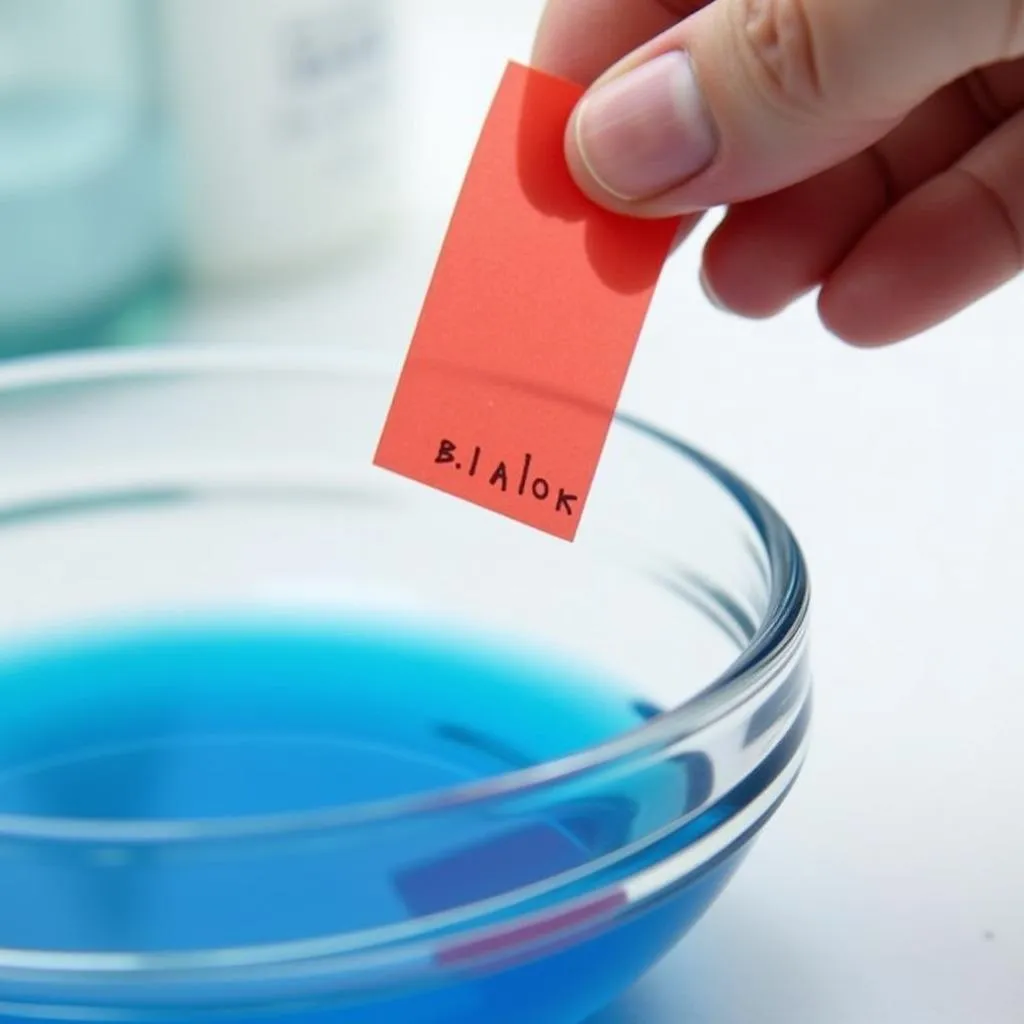Have you ever wondered what would happen if you dipped red litmus paper into dishwashing liquid? Would it stay red, or would it undergo a colorful transformation? Understanding how litmus paper works and the nature of dishwashing liquid can help us predict the outcome of this intriguing experiment.
Litmus Paper: A pH Indicator
Litmus paper is a common tool used in chemistry to determine the pH of a solution. pH is a measure of how acidic or basic a substance is, ranging from 0 (highly acidic) to 14 (highly basic) with 7 being neutral.
Red litmus paper is specifically designed to detect basic substances. When red litmus paper comes into contact with a base, it changes color from red to blue.
Dishwashing Liquid: Not Just for Dishes
Dishwashing liquid, on the other hand, is designed to cut through grease and grime on our plates. But what about its pH? Most dishwashing liquids are formulated to be slightly basic, which helps them effectively remove fatty residues. This basic nature is due to the presence of alkaline ingredients like sodium lauryl sulfate and sodium laureth sulfate.
The Colorful Encounter: Predicting the Outcome
Now, let’s put the pieces together. We know that red litmus paper turns blue in the presence of a base. We also know that dishwashing liquid is generally basic. Therefore, it’s safe to predict that red litmus paper would turn blue when dipped in dishwashing liquid.
 Red litmus paper turning blue in a dish of dishwashing liquid
Red litmus paper turning blue in a dish of dishwashing liquid
Why Does This Happen?
The color change observed is due to a chemical reaction between the litmus paper and the basic compounds in the dishwashing liquid. These compounds react with the dye molecules in the litmus paper, altering their structure and causing the color shift from red to blue.
Beyond the Experiment: Understanding pH in Everyday Life
Understanding the concept of pH and the use of indicators like litmus paper goes beyond a simple science experiment. It helps us navigate our everyday lives:
- Cleaning products: The pH of cleaning products affects their effectiveness. Basic solutions are better at removing grease and dirt, while acidic solutions are useful for descaling and removing mineral buildup.
- Skincare: The pH of our skin is slightly acidic, and using products with a pH that’s too high or too low can disrupt its natural balance.
- Gardening: The pH of soil affects the availability of nutrients to plants. Some plants thrive in acidic soil, while others prefer alkaline conditions.
Conclusion: A Blue Hue of Understanding
When red litmus paper meets dishwashing liquid, the result is a vibrant blue, signaling the basic nature of the cleaning agent. This simple experiment highlights the importance of pH in our daily lives and underscores how chemistry plays a role in even the most mundane tasks. So, next time you reach for the dish soap, remember the colorful lesson of litmus paper and the fascinating world of pH.
FAQs
1. What is the pH range of most dishwashing liquids?
Most dishwashing liquids have a pH range of 7-9, making them slightly basic.
2. Can I use blue litmus paper to test dishwashing liquid?
Yes, you can use blue litmus paper. However, it will not change color as dishwashing liquid is basic. Blue litmus paper only turns red in the presence of an acid.
3. Are all cleaning products basic?
No, not all cleaning products are basic. Some, like toilet bowl cleaners, are acidic to effectively remove mineral deposits.
4. Is it safe to handle dishwashing liquid?
While dishwashing liquid is generally safe for handwashing dishes, prolonged or direct contact with concentrated solutions can cause skin irritation. It’s always a good idea to wear gloves when handling cleaning products.
5. Can I use other household items to test pH?
Yes, there are other natural pH indicators like red cabbage juice, beetroot juice, and turmeric. These substances change color depending on the pH of the solution they are added to.
6. What are some examples of acidic substances?
Common acidic substances include lemon juice, vinegar, battery acid, and stomach acid.
7. What are some examples of basic substances?
Common basic substances include baking soda, ammonia solution, bleach, and drain cleaner.
Need Help with Your Home Projects?
Do you have more questions about pH, cleaning products, or anything related to your home? Contact our team of experts at Color Box Hanoi! We’re here to help you create a vibrant and inspiring living space.
Call us at 0373298888, email us at [email protected], or visit our showroom at 86 Cau Giay, Hanoi. We have a 24/7 customer support team ready to assist you!

